EVENT
Iwaizumi Town Local Folk Performing Arts Festival Dec.17(Sun.),2023
- 2023
- Appreciation
-
Date
2023.12.17
-
Time
Open 9:30 Start 10:00
-
Locate
Iwaizumi Chomin Hall
-
Fee
free
The highlight of the event is a collaboration featuring four performing arts groups, Nanazumai, Nenbutsu Kenbai (Buddhist Chant Sword Dance), and Sansa Odori from Iwaizumi Town, along with guest performers Ushifushi Nenbutsukenbai from Miyako City.
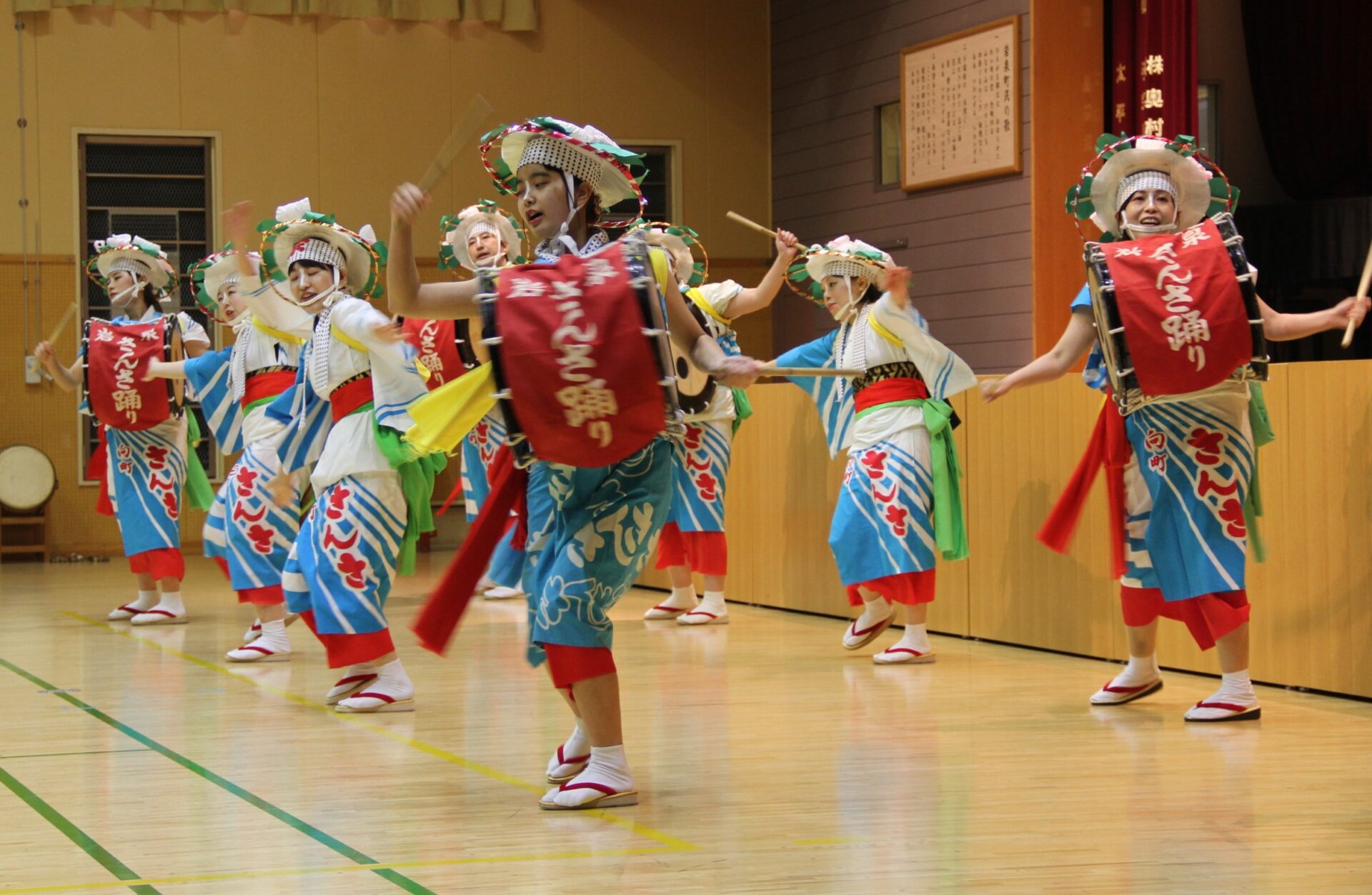
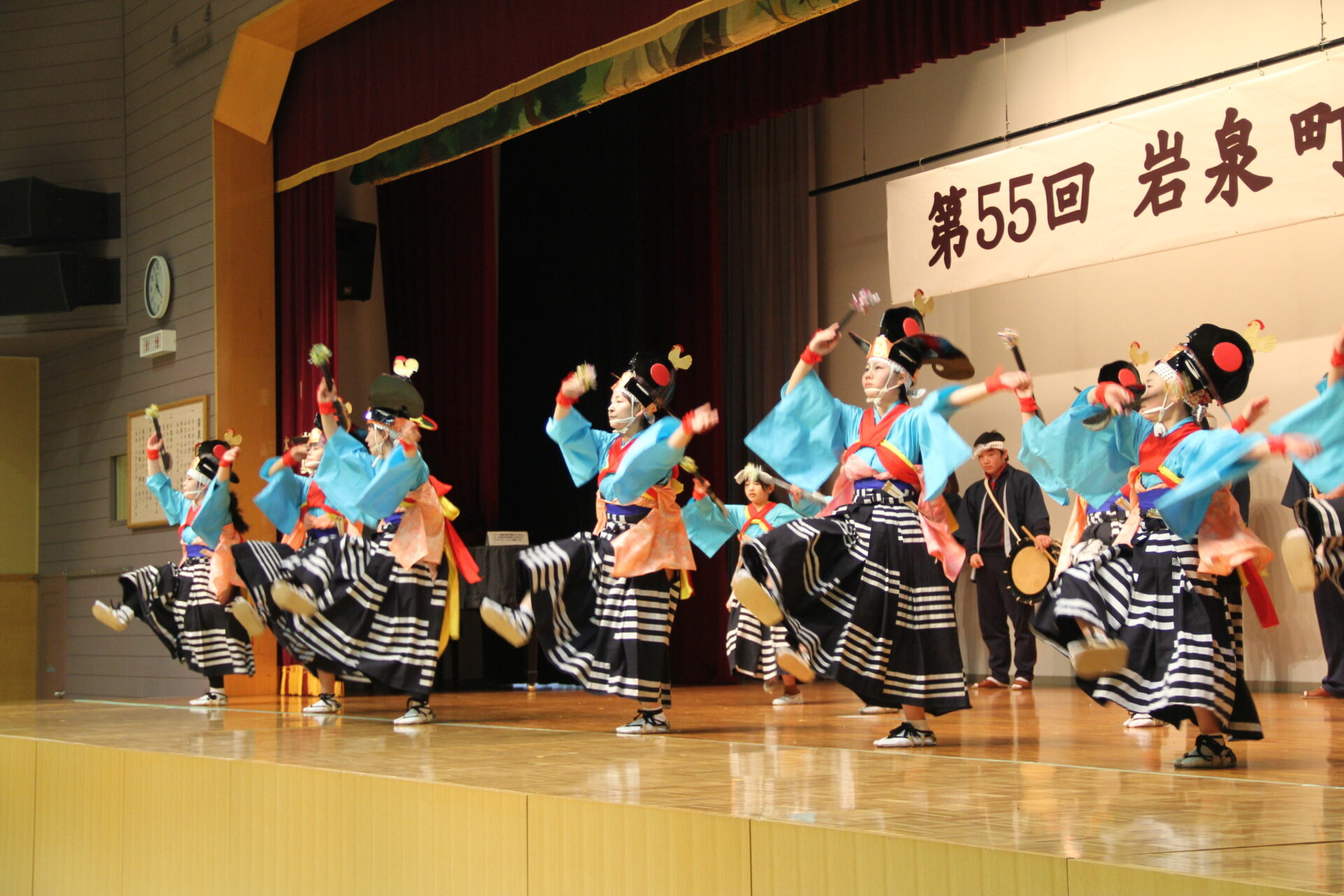
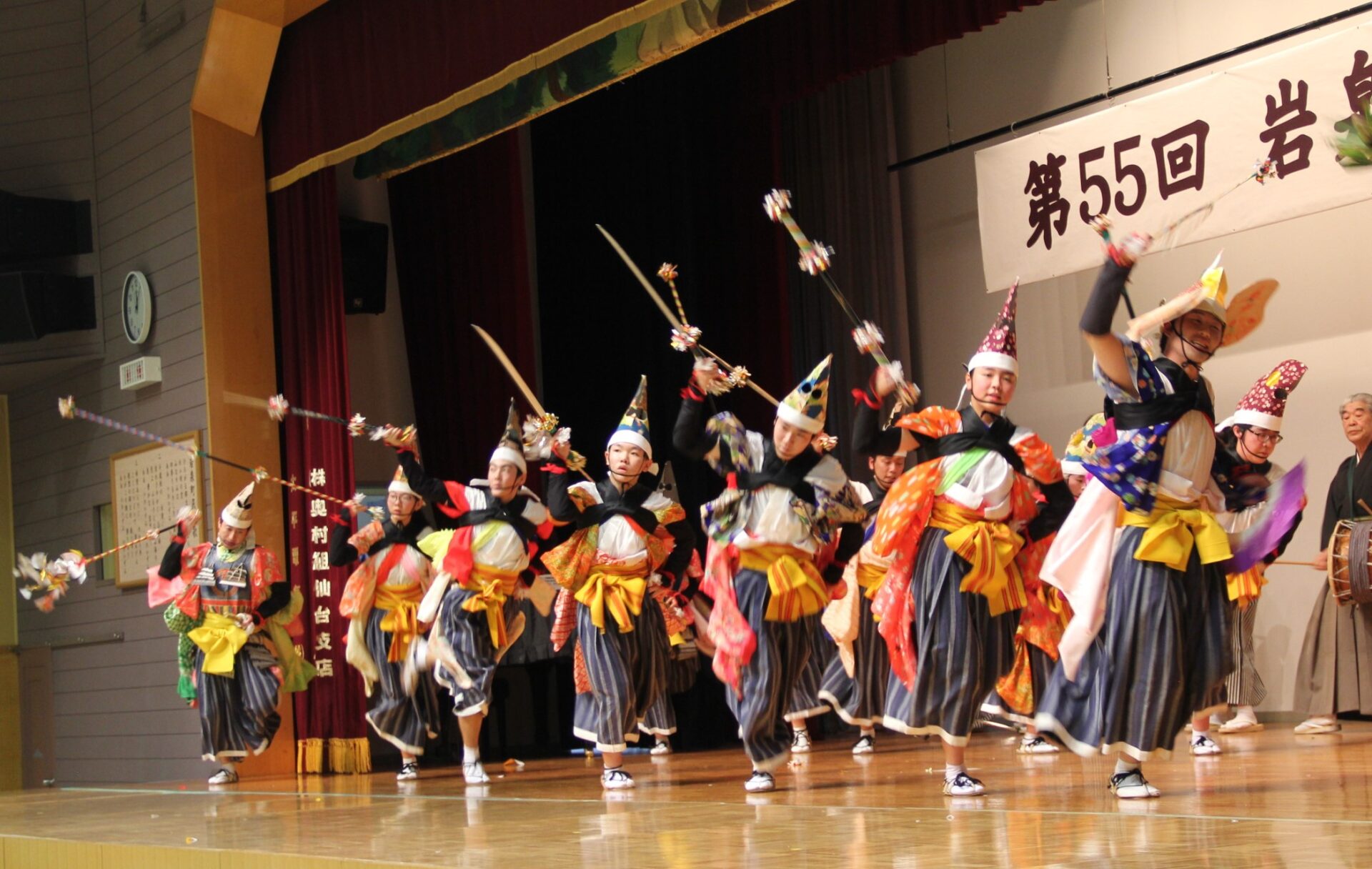
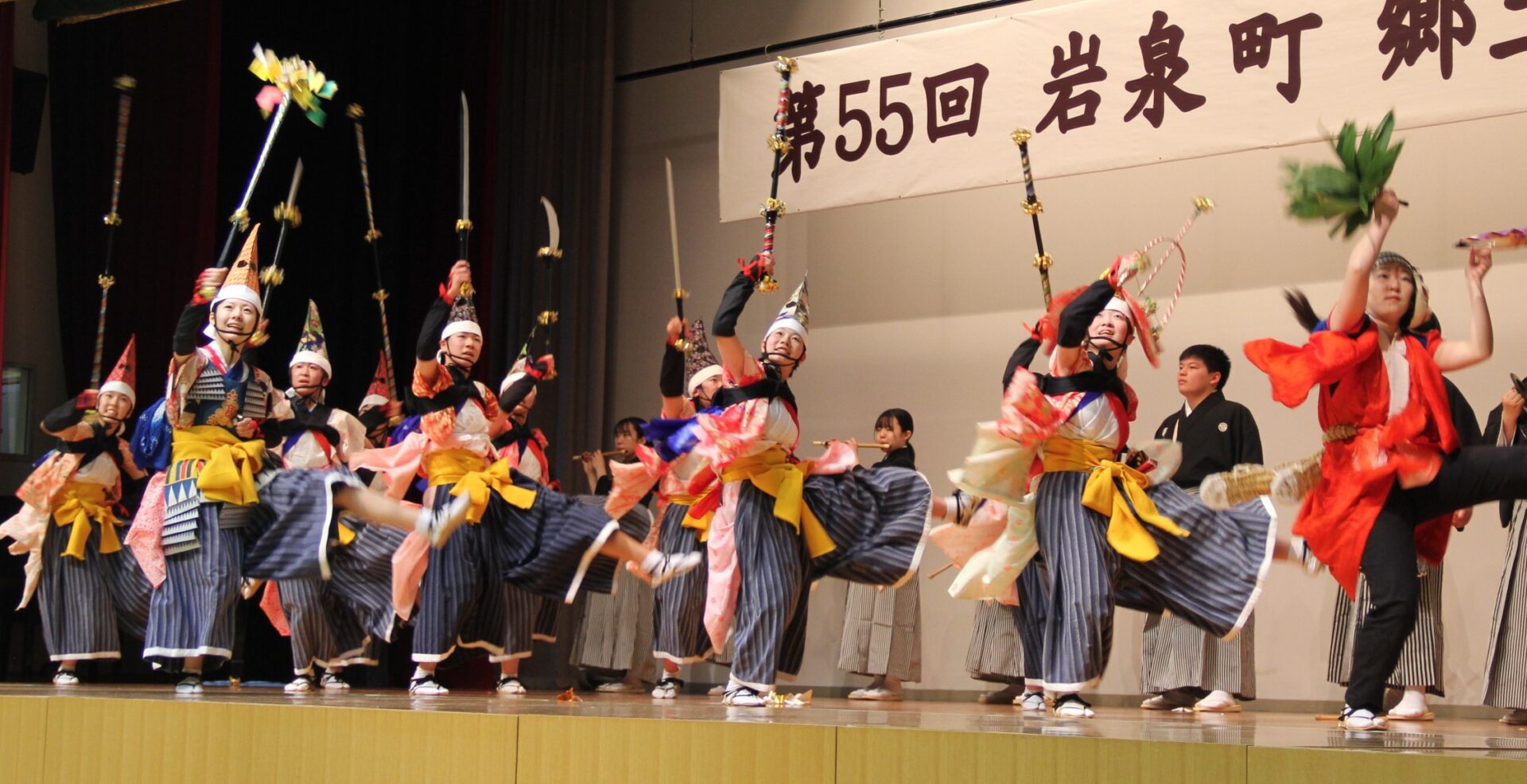
Locate|Iwaizumi Chomin Hall
Access
Access model from Tokyo (An overnight stay is required if using public transportation)
Day 1 Dec.16(Sat.)
| time | schedule | note |
|---|---|---|
| 6:32 | Tokyo―Morioka(8:44) | JR Tohoku SHinkansen HAYABUSA1 |
| 9:10 | Morioka Station East Exit―In front of Iwaizumi Hospital(11:24) | JR bus tohoku HAYASAKA KOGEN line |
| stay in Iwaizumi town |
Day 2 Dec.17(Sun.)
| time | schedule | note |
|---|---|---|
| 9:30-12:00 | Iwaizumi Town Local Folk Performing Arts Festival | Iwaizumi Chomin Hall |
| Sightseeing around the venue | ||
| 16:05 | In front of Iwaizumi Hospital―Morioka Station East Exit(18:13) | JR bus tohoku HAYASAKA KOGEN line |
| 18:50 | Morioka→Tokyo(21:04) | JR Tohoku SHinkansen HAYABUSA42 |
For the bus schedule between Morioka Station and Iwaizumi Town, see below↓ (there are four round-trip services per day) https://www.jrbustohoku.co.jp/route/detail.php?r=105&rc=15
For the bus schedule between Morioka Station and Iwaizumi Town, see below↓
https://www.town.iwaizumi.lg.jp/docs/2021111500010/
Visitors from overseas
◆You can ride with the JR East Pass and Japan Rail Pass.
Tourist information
Ryusendo Cave
Ryusendo Cave,also known as “Dagon Blue,” boasts one of the world’s clearest umdergrond lakes.
As one of Japan’s three largest limestone caves,it has also been designated as a national natural landmark.
The publicly accessible tourisu course covers 700 meters, while the total length,with comfoirmed sections alone,extends to 4,088 meters. Ongoing exploration continues to unveil its natural wonders,inviting visitors into a fantastical world imbued with the breath of nature.
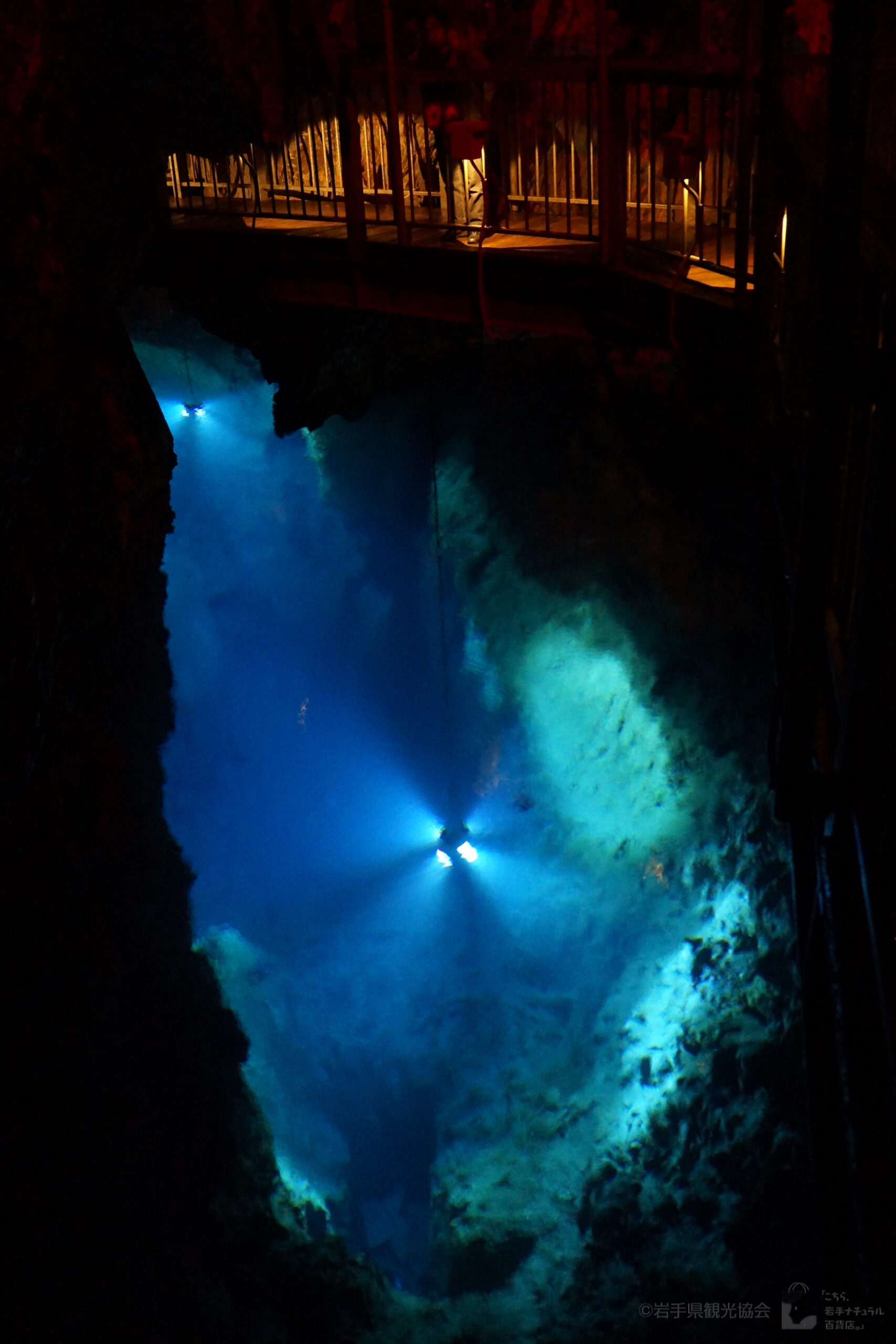
・Adress:1-1 Kannari, Iwaizumi,Iwaizumi, Iwate 027-0501
・TEL:0194-22-2566
・OPEN:8:30~17:00(October~April) 8:30~18:00(March~September)
・URL:http://www.iwate-ryusendo.jp/
Dry Flowers-Morinokinomi
A workshop for handmade dry flowers and nature crafts. They gather nuts, wildplants, and wildflowers nurtured by Iwaizumi’s nature, creating bouquets and decorations in their natural colors and shapes. You can also make your own wreaths and more.
- adress:51-4 Koyashiki,Iwaizumi,Iwaizzumi,Iwate 027-0501
- TEL:0194-22-4405
- Hands-on activities require reservations.
- Email:kinomi@echna.ne.jp
- open 9:30~17:00
Click here for more travel Information →https://iwaizumi-kankou.jp/
Areas
出演団体
Mukaimachi Sansa-odori
Sukuizawa Nenbutsukenbai
Nakano Nanazumai Preservation Society
Ushifushi Nenbutsu Kenbai(Miyako City)
Artists
-
Iwate Prefecture Iwaizumi High School’s Geinoh Club
Since its establishment in 1990, the club has performed at nine national competitions, three times at the National Theatre of Japan, and once in Paris. Many of the members not only belong to the club, but they are also a group of volunteers who aspire to pass on the Nakano Nanazumai dance. Although it is difficult to balance their activities during the peak season, they feel the need in spreading the local folk dance to as many people as possible, and to pass it on to younger generations.
It is said that the Nakano Nanazumai was created around the time of the “Seven Years of Famine” in the Tempo era based on the “Shittogi-jishi-mai” of the Kuromori Kagura from Miyako City. With the dancers divided into seven roles, and seven different dances comprise the whole, it is said that this is where Nanazumai (literally, seven dances) got its name. The dancers play the role of farmers who cultivate the fields, plant crops, protect them from vermin, and share the harvest, all in the hope of a bountiful gathering. -
Mukaimachi Sansa-Odori
Mukaimachi Sansa Odori (Iwaizumi Town)
In 1920, Gonjiro Mitaji from Iwaizumi learned how to dance and play the flute and taiko drum from a Morioka lumber dealer in the Hanawa District of Miyako, and brought them back home. In the following year, Gonjiro and Yaichi Ogasawara, who had come back from work away from home, taught the dance to young people in town, and this is said to be the beginning of the Mukaimachi Sansa Odori. Seizo Sasaki is said to be their first disciple. The dance was not performed for several years before and during the war, but after the war, Gonjiro started teaching the young people again. Because many of these young adults were from Mukaimachi, the dance came to be called “Mukaimachi Sansa”. There were no clear names for the different dances except for “To-ri,” and were expressed by the verbal rhythms. However in 1980, the dances were named, “To-ri, Hon-odori (No. 1 to No. 7), and Jinku-kuzushi”, when the dance was introduced at the Iwaizumi High School Cultural Festival, with a total of 9 dances that are being passed on today. -
Sukuizawa Nenbutsukenbai
Sukuizawa Nembutsu Kenbai (Iwaizumi Town)
In the Sengoku period (late 15th century to late 16th century), a nobleman from Kyoto escaped to Iwaizumi and died within a few years. It is said that Sukuizawa Nembutsu Kenbai started mainly in the villages around Mount Kuromori, by dancing the kenbai sword dance and kagura to appease the spirits of the deceased. These dances are now performed every year during obon festival as a memorial service, and consists of eight different dances. In addition, each dance has three different ways of dancing, so there are more than 20 different ways of dancing in total. -
Nakano Nanazumai Preservation Society
Nakano Nanazumai is a folk performance art handed down in the Omoto Nakano district of Iwaizumi Town. It is said to have origins dating back to the 1840’s , when Kitaro Kudo, who was called Kagura Tayu ”Master of Kagura Sacred Dance” at the time, created it by using the beginning portion of a kagura dance as its basic inspiration. The performers include 7 pairs of dancers doing 7 different dance segments that are named Dogu-tori, Yoko-hane, Chirashi, Tatakai, Tsuttōtsu, Sansoku “Torii-gakari”, and Dogu-osame. At the time, these were performed as kagura sacred dances, but as times changed, they became integrated into the village festival. Nakano Nanazumai is a gallant and lively dance entreating an abundant harvest, big catches in the sea and the general safety of the village. The strong and graceful dance imagines the hard work of preparing new fields, then raising precious crops, and finally thankfully celebrating that year’s harvest all together with fellow villagers.
-
Ushifushi Nenbutsu Kenbai
In 1190, Chinzei Hachiro Tametomo’s third son, Minamoto no Tameyori, was granted his territory in Hei and Kesen by Minamoto no Yoritomo, the first shogun of the Kamakura shogunate. He built a castle in Nejo, Roki, and took on the name of Hei Yorimoto.
Yorimoto built Kegon-in temple in dedication to the soul of his father, where he had 27 soldiers dance for the souls of ancestors and of the Minamoto clan and also of its rival Taira clan killed in the war. This is believed to be the origin of the Ushifushi Kembai.
During the annual Bon Festival in August, the dancers go around houses in the area to appease the souls of ancestors and the recently departed. On the 16th, it ritually performs its kembai and nanatsu-odori (seven-item dance) at the Kegon-in temple in Kebaraichi to pray for the dead.
Contact
Iwaizumi Town Board of Education
TEL:0194-22-2111
E-mail:y.takusari@town.iwaizumi.lg.jp
Sanriku International Arts Festival 2023
-JAPAN CULTURAL EXPO 2.0
Organized by|Sanriku International Arts Committee, Japan Arts Council, and Agency for Cultural Affairs, Government of Japan

Co-organized by|Hachinohe City, Hashikami Town, Hirono Town, Kuji City, Noda Village, Fudai Village, Tanohata Village, Iwaizumi Town, Miyako City, Yamada Town, Otsuchi Town, Kamaishi City, Ofunato City, Rikuzentakata City, Sumita Town, Sanriku Railway Co., Ltd., Japan Folk Performing Arts Association, NPO Iwate Arts Support Center, and NPO Japan Contemporary Dance Network
Cooperated by|NPO Michinoku Trail Club, imajimu LLC, Tohoku Cultural Property Video Research Institute, Minna no Shirushi LLC